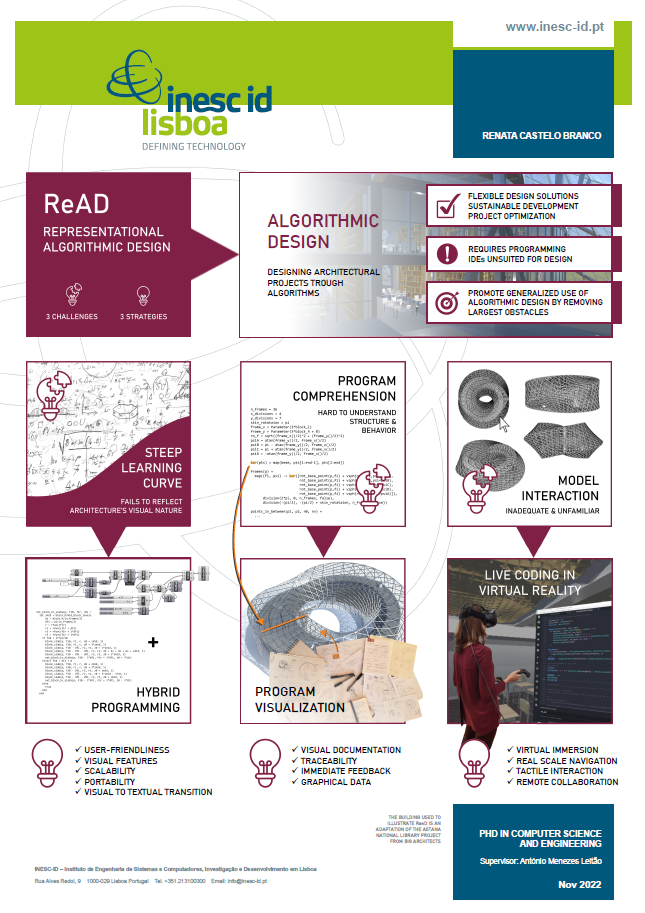Representational
Algorithmic Design
PhD Thesis
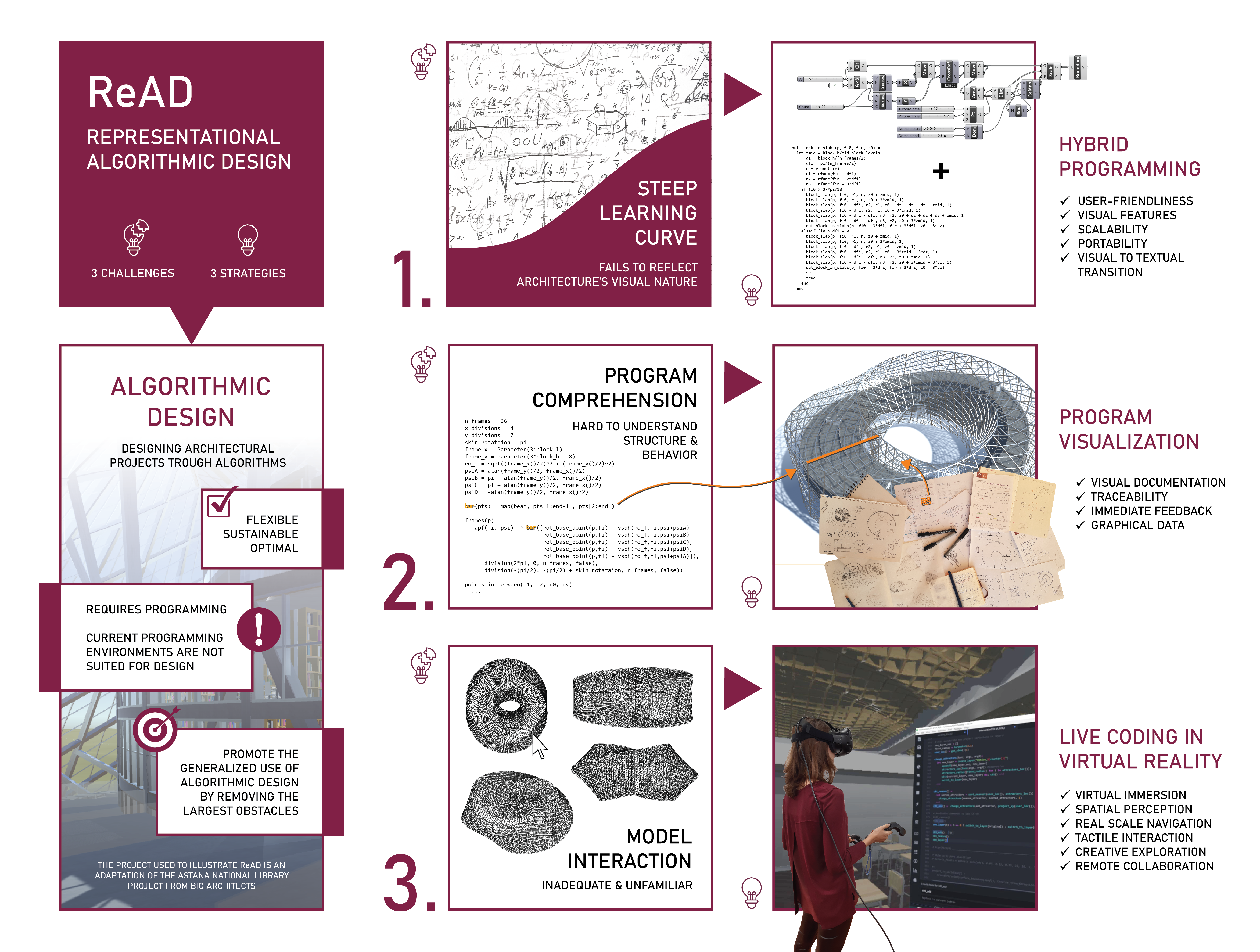
Abstract
Algorithmic Design (AD) is an innovative approach to the architectural design process that allows for the creation of form
through algorithms. The inherent flexibility of AD not only encourages designers to explore a wider design space, but also
supports the automation of design tasks, eases the integration of changes in later stages, and promotes design optimization,
considerably reducing project costs.
Nevertheless, current AD uses representation methods that radically differ from those used in architectural
practice, creating a mismatch that is further exacerbated by the inadequacy of current Integrated Development Environments.
This creates a barrier to the adoption of AD, demotivating architects from its use and, thus, limiting the potential benefits.
We propose addressing this problem by coupling AD with complementary representation methods that are adequate for designing
complex architectural projects and by supporting their synchronization with a design tool that architects feel comfortable
using - an approach called Representational Algorithmic Design.
Algorithmic Representation Space
Prospectives - The Bartlett School of Architecture, UCL, 2022
Castelo-Branco, Renata & Caetano, Inês & Leitão, António
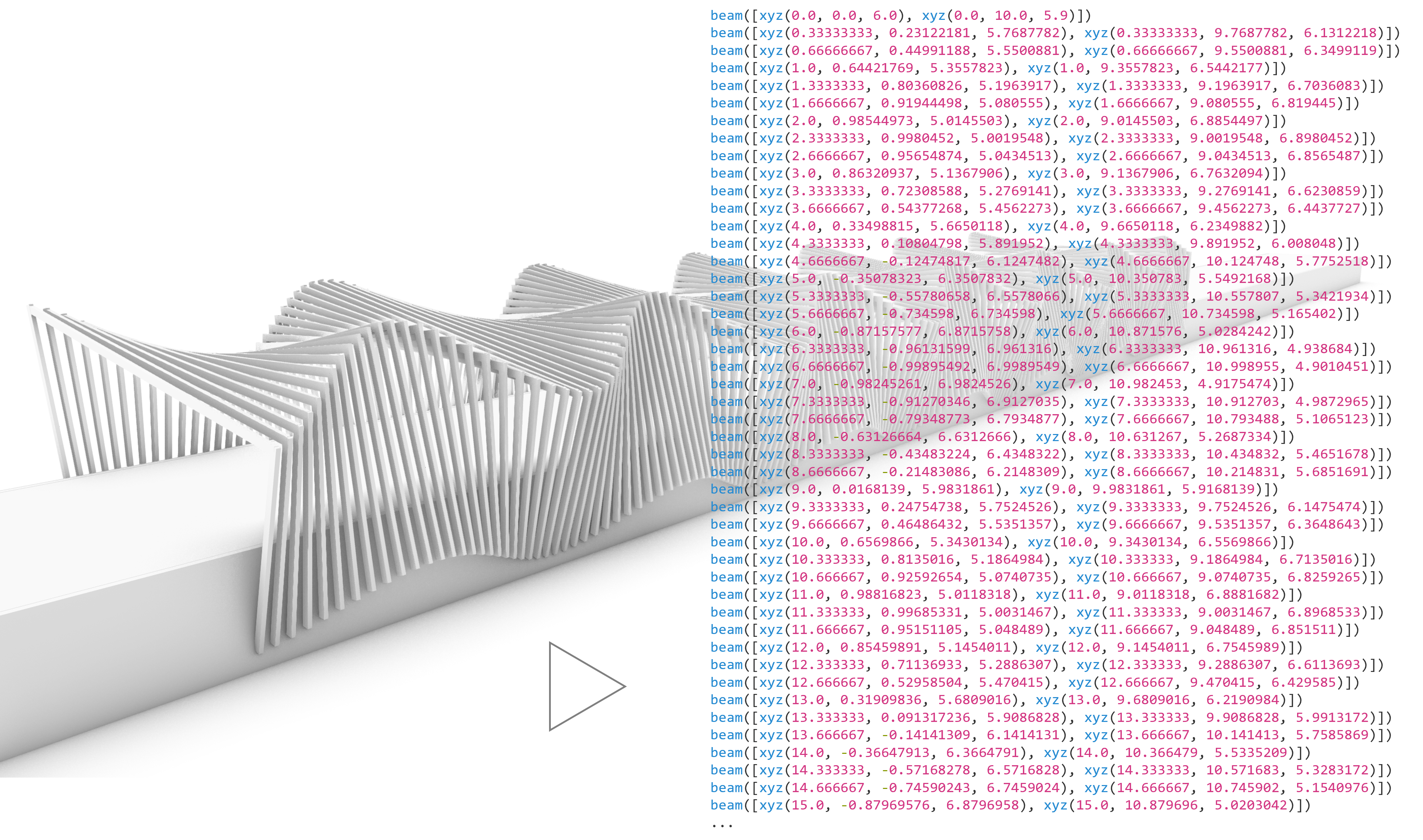 Abstract: Architecture is an ancient profession, and the means used to produce
architectural entities have constantly changed to respond to new design trends and representation
needs. Although for centuries this meant gradual changes in the design practice, the increasing
technological development witnessed since the 60s has propelled the appearance of increasingly
powerful representation methods. One of them - Algorithmic Design (AD) - is based on algorithms,
allowing for great design freedom. However, it relies on an abstract representation of design
intentions, which hinders their immediate comprehension. To appeal to a broader architectural
community, we propose the Algorithmic Representation Space (ARS), a new approach to the way
architects represent algorithmic descriptions. The ARS intends to lower AD's comprehension barriers
and simultaneously merge it with more traditional representation means, by encompassing not only the
algorithm but also its outputs, along with mechanisms that aid the comprehension of the design space
it represents.
Abstract: Architecture is an ancient profession, and the means used to produce
architectural entities have constantly changed to respond to new design trends and representation
needs. Although for centuries this meant gradual changes in the design practice, the increasing
technological development witnessed since the 60s has propelled the appearance of increasingly
powerful representation methods. One of them - Algorithmic Design (AD) - is based on algorithms,
allowing for great design freedom. However, it relies on an abstract representation of design
intentions, which hinders their immediate comprehension. To appeal to a broader architectural
community, we propose the Algorithmic Representation Space (ARS), a new approach to the way
architects represent algorithmic descriptions. The ARS intends to lower AD's comprehension barriers
and simultaneously merge it with more traditional representation means, by encompassing not only the
algorithm but also its outputs, along with mechanisms that aid the comprehension of the design space
it represents.
Digital Representation Methods: The Case of Algorithmic Design
Frontiers of Architectural Research - KeAi Publishing, 2022
Castelo-Branco, Renata & Caetano, Inês & Leitão, António
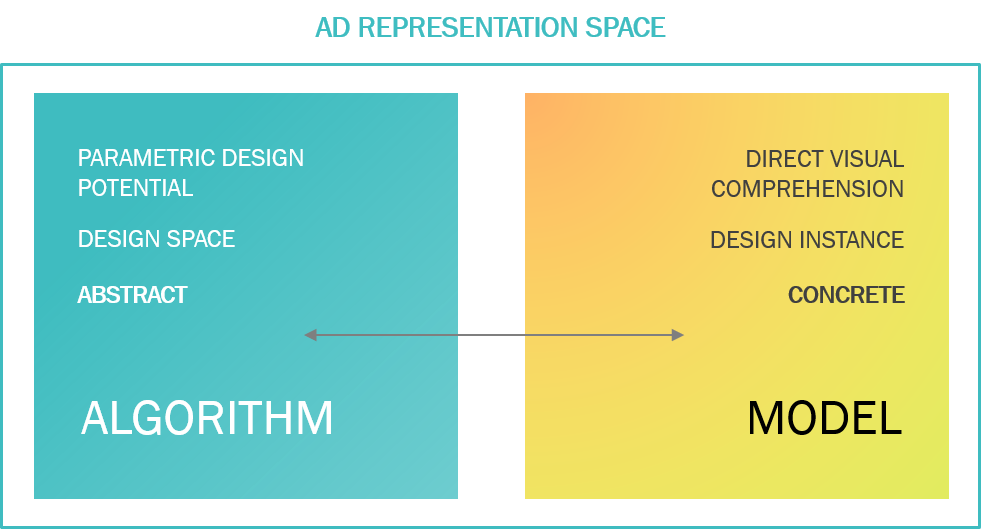 Abstract: Architectural representation encompasses the means used to describe architectural entities. This
discipline has long been under constant change due to architects' ever-present desire for innovation. Algorithmic Design (AD)
is currently making its way into the plethora of representation methods that integrate the architect's day-to-day work tools.
However, it provides its fair share of controversy and hardship as it goes. This paper assesses whether AD is suitable as a
representation method for architectural design by making a systematic analysis of this medium as a contemporary representation
method. Specifically, we investigate (1) its birth and evolution as a means of representation, (2) the characteristics that
make it simultaneously appealing and off-putting to the architectural community, (3) the influence technological evolution and
education on its proliferation, and (4) its capacity to represent design problems in comparison to the currently predominant
means of digital architectural representation, that is, computer-aided drafting and building information modeling.
Abstract: Architectural representation encompasses the means used to describe architectural entities. This
discipline has long been under constant change due to architects' ever-present desire for innovation. Algorithmic Design (AD)
is currently making its way into the plethora of representation methods that integrate the architect's day-to-day work tools.
However, it provides its fair share of controversy and hardship as it goes. This paper assesses whether AD is suitable as a
representation method for architectural design by making a systematic analysis of this medium as a contemporary representation
method. Specifically, we investigate (1) its birth and evolution as a means of representation, (2) the characteristics that
make it simultaneously appealing and off-putting to the architectural community, (3) the influence technological evolution and
education on its proliferation, and (4) its capacity to represent design problems in comparison to the currently predominant
means of digital architectural representation, that is, computer-aided drafting and building information modeling.
Visual meets Textual: A Hybrid Programming Environment for Algorithmic Design
CAADRIA Conference: (RE) Anthropocene - Design in the Age of Humans
Bangkok, Thailand, 2020
Castelo-Branco, Renata & Leitão, António
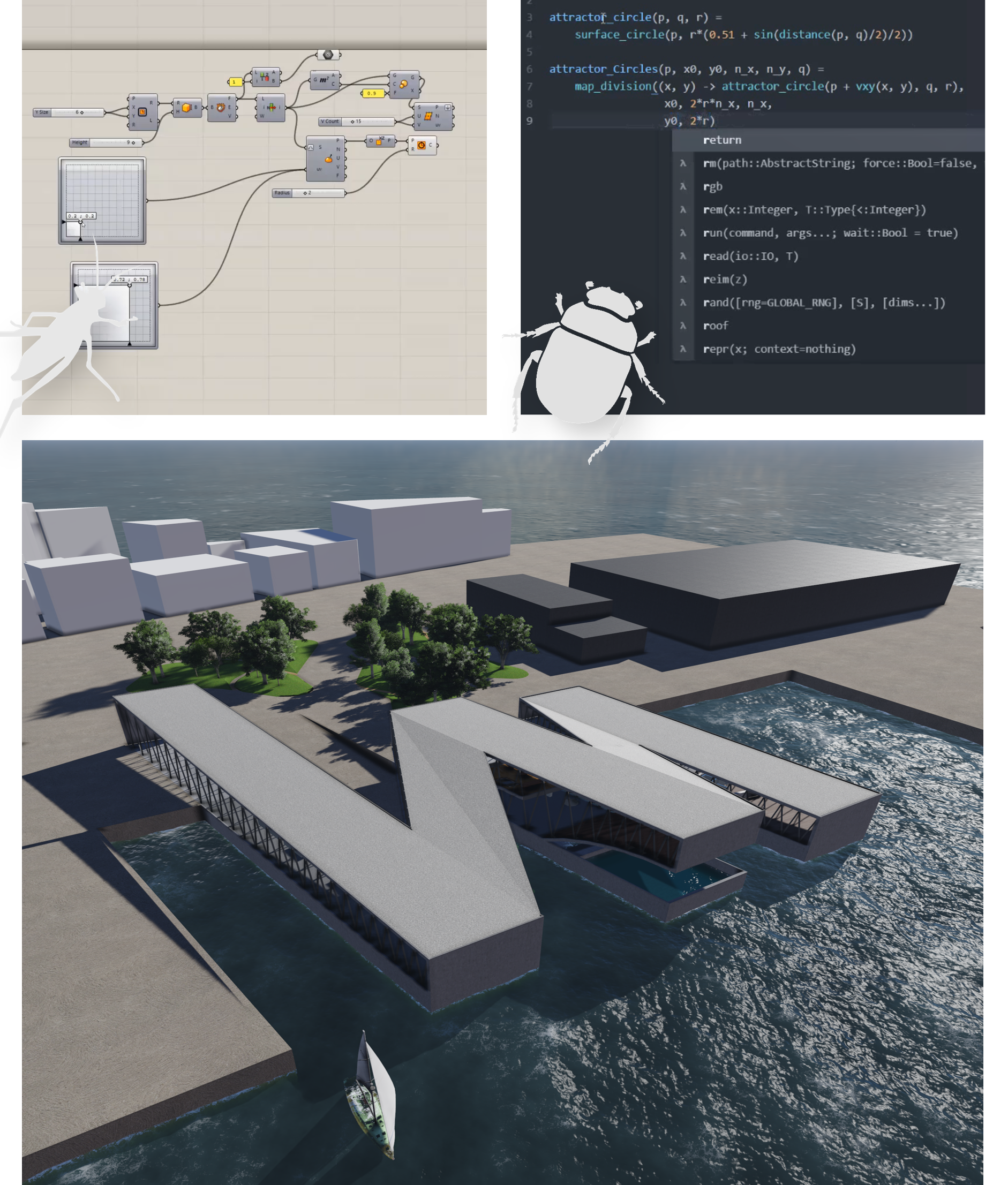 Abstract: Algorithmic approaches are currently being introduced in many areas of human activity and
architecture is no exception. However, designing with algorithms is a foreign concept to many and the inadequacy of current
programming environments creates a barrier to the generalized adoption of Algorithmic Design (AD). This research aims to
provide architects with a programming tool they feel comfortable with, while allowing them to fully benefit from AD’s
advantages in the creation of complex architectural models. We present Khepri.gh, a hybrid solution that combines Grasshopper,
a visual programming environment, with Khepri, a flexible and scalable textual programming tool. Khepri.gh establishes a
bridge between the visual and the textual paradigm, offering its users the best of both worlds while providing an extra set of
advantages, including portability among CAD, BIM, and analysis tools.
Abstract: Algorithmic approaches are currently being introduced in many areas of human activity and
architecture is no exception. However, designing with algorithms is a foreign concept to many and the inadequacy of current
programming environments creates a barrier to the generalized adoption of Algorithmic Design (AD). This research aims to
provide architects with a programming tool they feel comfortable with, while allowing them to fully benefit from AD’s
advantages in the creation of complex architectural models. We present Khepri.gh, a hybrid solution that combines Grasshopper,
a visual programming environment, with Khepri, a flexible and scalable textual programming tool. Khepri.gh establishes a
bridge between the visual and the textual paradigm, offering its users the best of both worlds while providing an extra set of
advantages, including portability among CAD, BIM, and analysis tools.
ReAD: Representational Algorithmic Design
<Programming> Conference: Student Research Competition
Porto, Portugal, 2020
Castelo-Branco, Renata
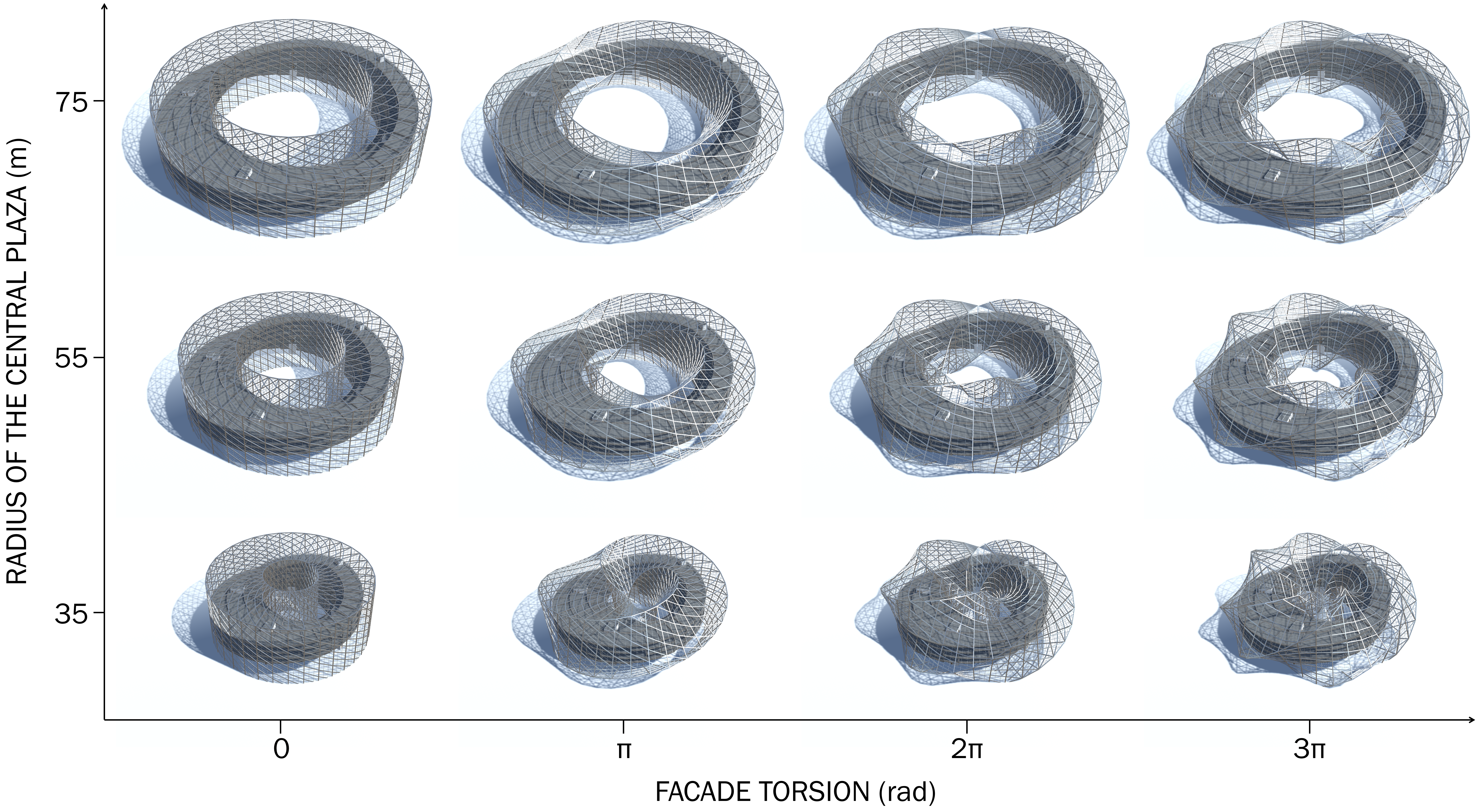 Abstract: Algorithmic Design (AD) is a novel approach to architectural design based on the creation of form
through algorithms. The inherent flexibility of AD encourages the exploration of a wider design space, the automation of
design tasks, and design optimization, considerably reducing project costs. Nevertheless, current AD uses representation
methods that radically differ from those used in architectural practice. This creates a barrier to the adoption of AD, thus,
limiting the potential benefits. We propose to address this problem by coupling AD with complementary representation methods
that are adequate for designing complex architectural projects and by supporting their synchronization in a dedicated design
tool.
Abstract: Algorithmic Design (AD) is a novel approach to architectural design based on the creation of form
through algorithms. The inherent flexibility of AD encourages the exploration of a wider design space, the automation of
design tasks, and design optimization, considerably reducing project costs. Nevertheless, current AD uses representation
methods that radically differ from those used in architectural practice. This creates a barrier to the adoption of AD, thus,
limiting the potential benefits. We propose to address this problem by coupling AD with complementary representation methods
that are adequate for designing complex architectural projects and by supporting their synchronization in a dedicated design
tool.
PhD open Days at IST | March 2018
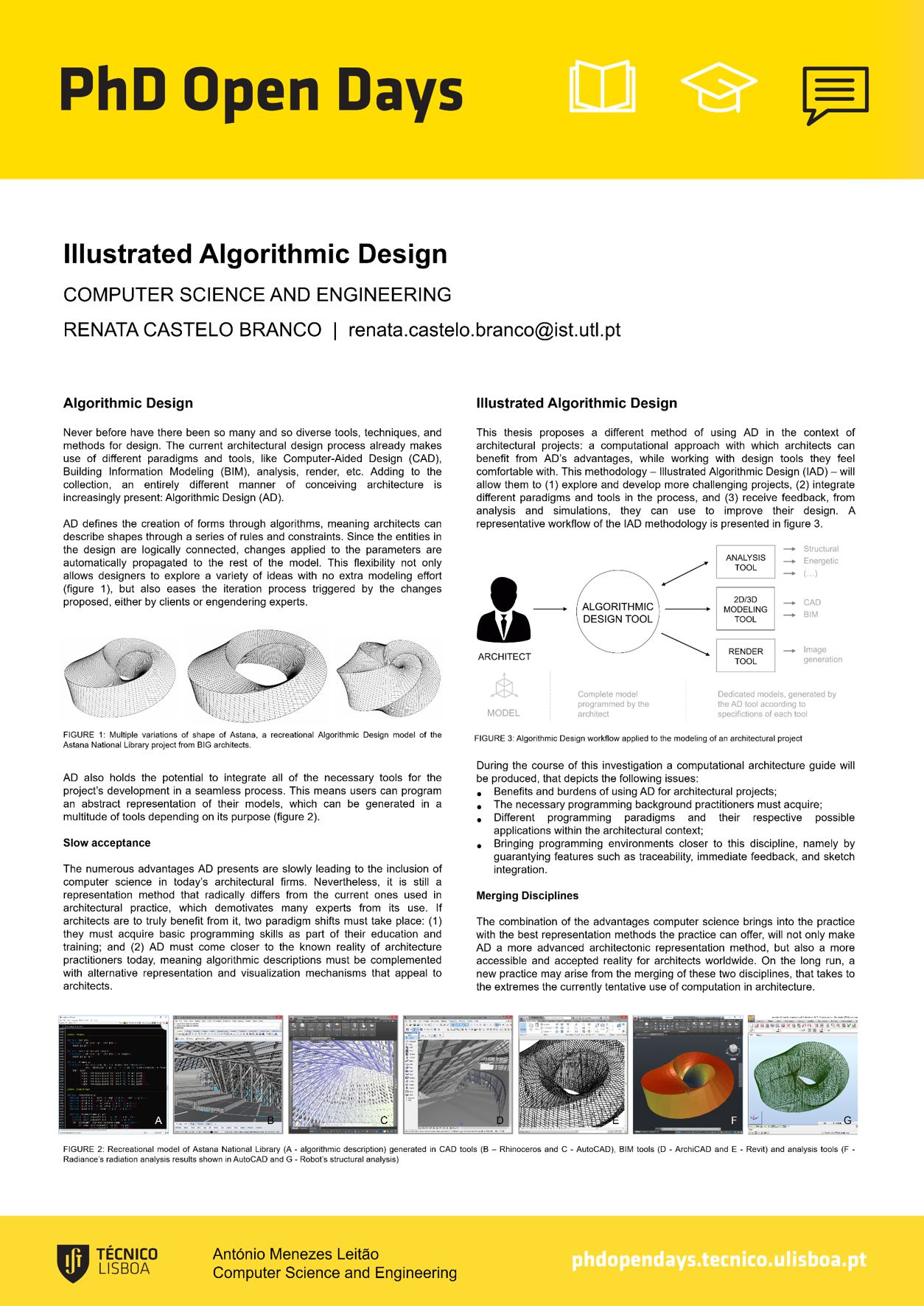
Science and Technology Summit | July 2018
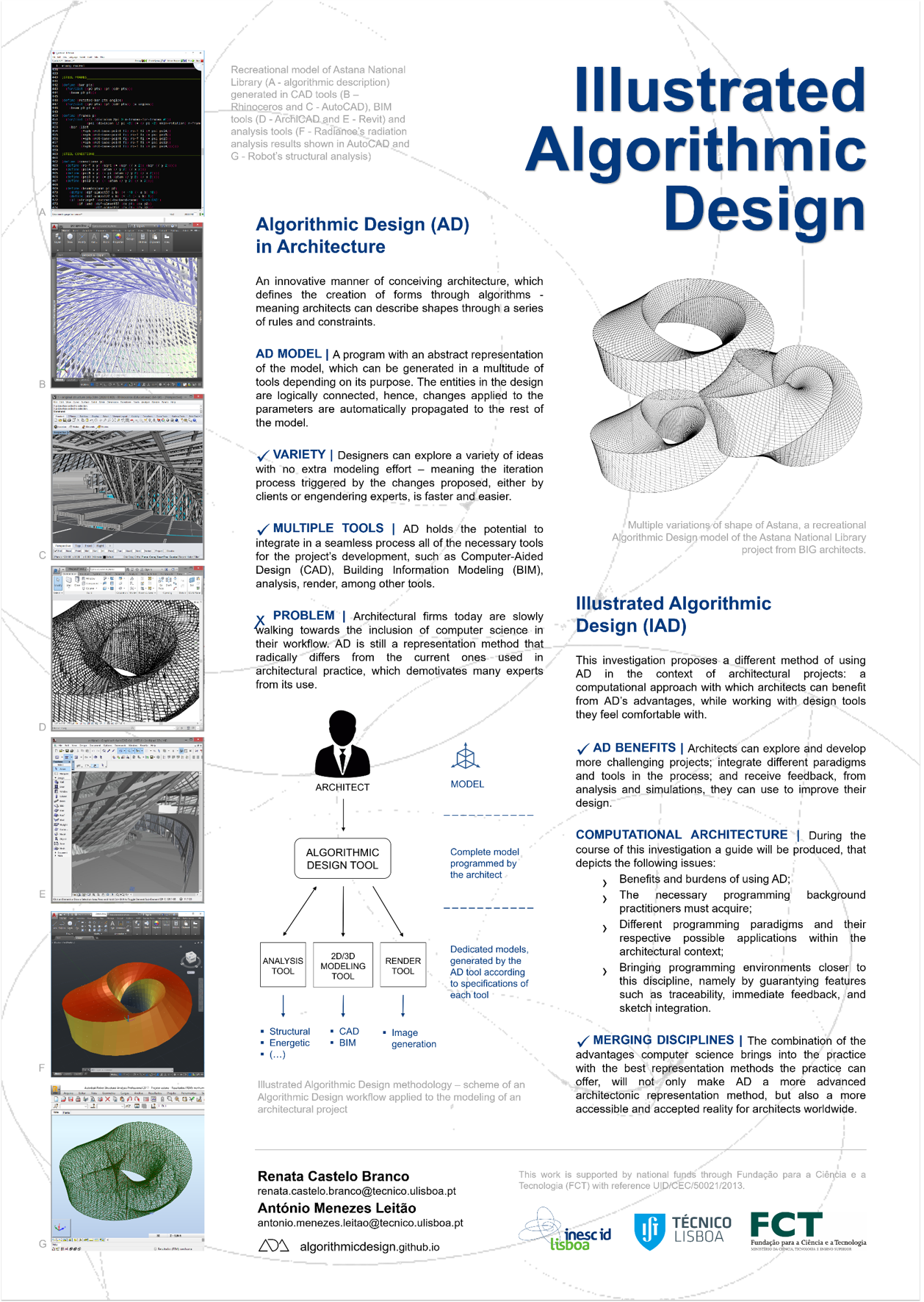
INESC-ID Evaluation | December 2018
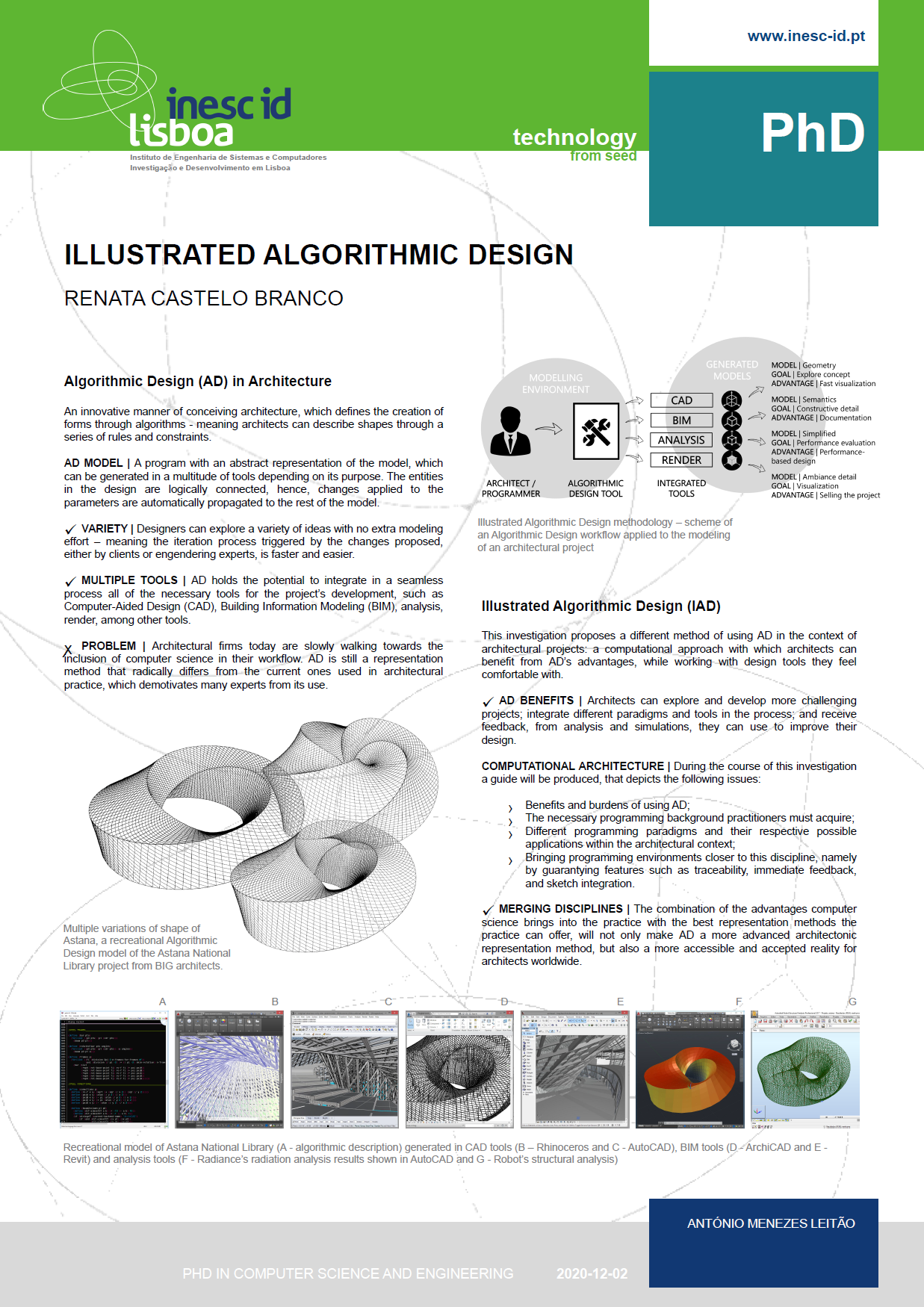
INESC-ID Evaluation | November 2022
